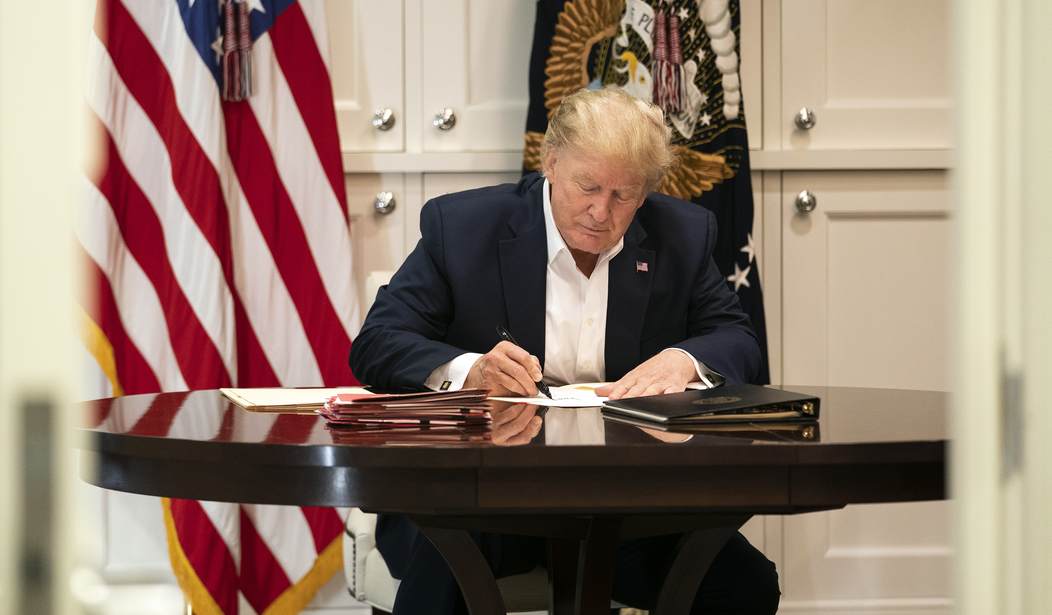A little-discussed but transformative patient protection policy put into place by the Trump administration is proving to be an extremely effective tool in unwinding the tangled mess of American medical pricing. Under the orders, hospitals must provide the federal government with records on all the prices they negotiate with private insurers.
Some hospitals banded together to sue the administration (they lost…twice), and the insurers’ trade association wrote a 57-page letter to the government calling the Transparency Rule “unconstitutional” and insinuating that too much transparency would not be helpful to the average health consumer.
Every American should be able to get the health care information they need, when they need it, in a way that’s customized and personal to their own circumstances in order to make informed health care decisions for themselves and their families. This information should empower patients and consumers to seek and receive care from health providers based on accurate, personally relevant information about cost and quality. When implemented appropriately, price and quality transparency should simultaneously enhance consumers’ health care experience and, on average, push prices and costs down—not up—for consumers (and payers like employers). AHIP and our member health insurance providers know that consumer-focused transparency strategies and tools are essential to our ability to deliver on these commitments, and we know the Departments share these goals and commitments…The proposed rule is overly broad and prescriptive and would ultimately not enable consumers to make better-informed health care decisions.
When The New York Times decided to take a deep dive into just what compliance with the policy was revealing, they discovered there may be good reason for medical power brokers to keep their pricing systems hidden from the public eye.
But data from the hospitals that have complied hints at why the powerful industries wanted this information to remain hidden.
It shows hospitals are charging patients wildly different amounts for the same basic services: procedures as simple as an X-ray or a pregnancy test.
And it provides numerous examples of major health insurers — some of the world’s largest companies, with billions in annual profits — negotiating surprisingly unfavorable rates for their customers. In many cases, insured patients are getting prices that are higher than they would if they pretended to have no coverage at all.
As an example, NYT went on to list the comparative costs of a standard colonoscopy at the Mississippi Medical Center: $1463 with a Cigna plan, $2144 with Aetna, and a stunning $782 with no insurance at all.
Naturally, those who follow the logic of free markets understand that subsidies always increase cost. We see that in the student loan industry and green energy sectors. Insurance companies can spread out the increased cost of care to their consumer base, which basically acts as a subsidy for the hospital. Why charge $700 for a service when you have a partner willing to pay $1400 for the same service?
But NYT also found that there were several bad actors still holding out on fulfilling their legal responsibility for transparency. These “bad actors” are among the most profitable medical facilities in the nation.
Five of the major insurance companies — Aetna, Cigna, Humana, United, and the Blue Cross Blue Shield Association — all declined reporters’ requests for interviews.
Cedars-Sinai in Los Angeles told NYT, “We do not post standard cash rates, which typically will not reflect the price of care for uninsured patients” They have yet to provide their pricing. NYT reporters say that originally the hospital had posted a 2.5 GB file that had more than a million lines but no data.
NYU Langone has also flouted the policy and has not yet published rates and prices.
Stanford Health Care stated, “Services that do not have a fixed payer-specific rate are shown as variable.” Their available data provides over 300,000 possible pricing combinations of insurance and medical treatments. It provides prices for a mere 479.
The University of California San Francisco Medical Center took a similar approach, saying they have listed pricing “where possible” and where not possible, they have described that pricing as “variable.” And of the more than eight million pricing combinations that are possible at UCSF, they list prices for just 346. They continue to withhold pricing.
Montefiore Medical Center in the Bronx has refused to publish prices and wants patients to believe that there is no direct link between what a procedure costs the hospital and what it costs the patient, telling NYT “The resources we provide ensure that our patients know what kind of assistance is available to them and, ultimately, what a procedure will cost them — not us.”
Vanderbilt University Medical Center, Orlando Health, and Long Island Jewish Medical Center are also among those organizations that refuse to comply with their obligations to transparency as ordered by the federal government.
The GOP arm of the House Ways and Means, led by Rep.Kevin Brady (R-TX), says the data provided in the NYT report vindicates the Trump-era policy by forcing the door open on just how our medical industry decides on pricing, but they remain concerned that the Biden administration will not enforce full disclosure moving forward.
A woman who tried to find an affordable rabies vaccine for her son found out the cash price quoted to her by the hospital was wrong when she got a bill in the mail weeks late for an additional $2,260.
Common, commodity-like services such as MRIs varied by thousands of dollars depending on the insurance plan.
Even pregnancy tests at a single hospital varied among plans issued in the same state.
The data vindicates the Trump Administration’s vision of price transparency and is a major victory for patients and consumers who have been frustrated by the complexity of the health care system. The Biden Administration increased penalties on hospitals who don’t follow the rules and disclose their prices, but more must be done.
On a bipartisan basis, Congress required that all Americans receive a personalized true and honest cost estimates before scheduled surgeries. The Biden Administration has announced that they will not be implementing this provision by the date required by law. They should change course and work swiftly to implement fully that provision as Congress intended.
Read the full and highly detailed report from The New York Times here. Kudos to the outlet for shining a light in the purposefully dark corner of medical pricing. Patients across the country can thank the Trump Administration for their efforts to protect patients from excessive medical billing and vague pricing structures when it comes to the most important thing they have…their health.













Join the conversation as a VIP Member